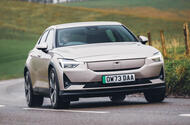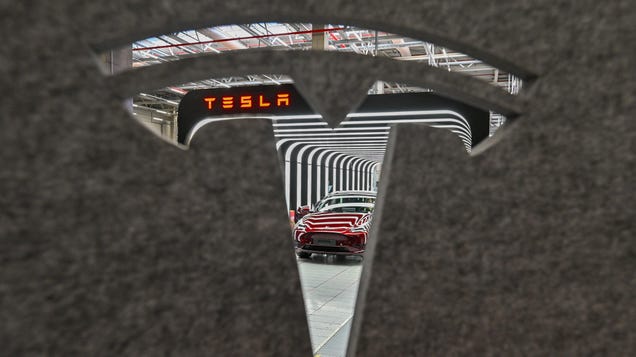Featured
Polestar’s Leadership Shift Signals Hope Amid Sales Decline

Sales of the Polestar 2 have fallenAppointment of a former CFO to lead the start-up tells all about its situation but there's hope on the horizon
Polestar’s announcement in August that it was switching CEOs provided a window on the ailing condition of the electric car start-up spun out of Volvo.
The CVs of the two CEOs were instructive. Out went former design boss Thomas Ingenlath and in came former chief financial officer Michael Lohscheller.
Ingenlath had been promoted from his role as head of design of Volvo in 2017 to form a new electric subsidiary with aesthetics at its core.
Seven years on, Polestar products have the looks and quality to match those of a mature car company. But as the appointment of industry veteran Lohscheller suggests, the company’s finances are as bad as any start-up's.
Lohscheller, former CFO and then CEO of Opel, has become a go-to guy for embattled start-ups looking for solid guidance from an wily old industry hand. Since leaving Opel in 2021, he spent seven months as global CEO of Vietnamese brand Vinfast, then 19 months as president and CEO of infamous fuel cell hopeful Nikola.
Lohscheller’s fast cycling between jobs suggests he’s either become a short-term turnaround specialist or didn’t gel with those particular start-ups. Either way, he’s got insight into both ends of the automotive spectrum.
Polestar has suffered as badly as any electric start-up without actually hitting the buffers, Fisker-style. It got so bad that in February, Volvo decided it had to reduce its financial exposure to Polestar by cutting its stake from 48% to 18% and handing over the balance of shares to parent Geely.
Then in May, Polestar received a deficiency notice from New York tech-focused stock exchange Nasdaq for not having filed its annual report for the previous year on time. It eventually filed in mid-August, showing a net loss of $1.2 billion (£0.9bn) on revenue of $2.4bn (£1.8bn).
Sales of its single vehicle – the 2 electric saloon - have fallen, even in the UK where it competes in the EV-friendly corporate market. Registrations to the end of August in 2024 stood at 3863, down from 8981 the year before.
More bad news followed in July, when Polestar received a warning that its shares had fallen below the minimum $1 worth and faced delisting from Nasdaq. In August, the company’s value based on its share price was just $1.14bn (£0.87bn), down from a high in 2022 of more than $21bn (£16bn).
“Material uncertainty about Polestar's ability to continue as a going concern persists,” the company said in its delayed financial report.
Polestar could have fallen into the same doom spiral as Fisker but it is far more fortunate in that it benefits from the support and influence of parent Geely. In February, Polestar announced that it had secured $950 million (£725m) in funding from a range of international banks, keeping the money flowing until such time as it can reliably generate its own.
It also took the chance to shake up its leadership, both executive and non-executive. Along with the exit of Ingenlath, Polestar announced the retirement of chairman Håkan Samuelsson, a former CEO of Volvo, and installed in his place former Skoda CEO and ex-VW heavyweight Winfried Vahland. Meanwhile, a new chief financial officer, Jean-François Mady, was appointed from Stellantis.
The company has also been cutting costs in part by reducing headcount by 500 last year through the means of a hiring freeze. That might not sound a lot compared with, say, Volkswagen but Polestar has only 2523 employees, according to the annual report.
The reason Polestar has so few workers is that it runs what Geely calls an ‘asset light’ model, whereby it pays other Geely group companies to develop platforms and technology, and also build its cars. Geely group brands tend to have a speciality when it comes to vehicle development, which they can then use to offset their bills by selling to other parts of the company.
Polestar’s 650-strong development team, for example, focuses on bonded aluminium architectures, high-power electric motors, bi-directional compatible battery packs and in-car software development.
Meanwhile, Polestar pays Volvo to build its new Polestar 3 large SUV, and Zeekr to build the new Polestar 4 coupé-SUV in China. It also pays a licence fee to use Geely platforms, such as Geely’s PMA-1 platform and GEEA2.0 electrical architecture for the 4. The upcoming Polestar 5 sports saloon, planned for 2025, will use Zeekr's new ZEEA2.5 architecture.
Theoretically, this method cuts Polestar’s development bill and speeds up the creation of new models. The access to Geely’s global network means it can dodge tariff-related problems that other Chinese rivals such as Nio and Xpeng can’t yet – for example, making the 3 in Volvo’s US plant and eventually the Renault-Geely factory in South Korea for the 4.
Polestar appears to be turning a corner. Shares in the company rose in early September to levels not seen for a year, valuing Polestar at the end of September around three times its August figure. On 17 September, Polestar announced it had been told by Nasdaq that the share price was high enough to lift the threat of delisting.
Perhaps the biggest boost for the brand is that it now sells three models instead of just one. The pricier 4 and 3 will help cement the brand’s premium positioning, albeit one that brings the likes of Porsche into the competitor pool, along with BMW, Audi and Mercedes-Benz. The company is targeting positive cash flow (a measure of profitability) for late next year.
Polestar is not about to run out of cash, with the $950m injection earlier this year as well as Volvo’s promise to extend its credit facility to the company to $1bn to the end of 2028. Geely’s network of companies, meanwhile, continue to innovate in platforms, electric tech and manufacturing. Geely’s heft should also secure Polestar good deals on batteries.
With the new management team in place, Polestar can now cross the bridge “from a start-up to an established, leading player”, outgoing chair Samuelsson said in August. In doing so, it’ll be hoping the bad news bears of 2024 will have been soundly chased away.
Negligence Case Against Mississippi Toyota Dealership Highlights Customer Safety Concerns

A Toyota dealership in Mississippi may find out the hard way that customer safety is important even if they’re not in a car. A court of appeals cleared the way last month for a man’s negligence suit against J. Allen Toyota in Gulfport, Mississippi to move forward. The suit stems from an incident that happened in…

Reviving a Classic: The Electric Renault 5 Reimagined
 The Renault 5 is back as a modern recreation of a small car legend – this time, with electric power
It’s been almost four years since Renault boss Luca de Meo outlined his 'Renaulution' plan to lift the brand's desirability (and profitability) with a range of new models reimagining some of its much-loved icons from the past.At the heart of it all was a stunning remake of the Renault 5. The brand hopes this returning supermini can do what the original R5 did by bringing affordable mobility to France, but this time using electric power. A starting price of around £23,000 is expected. In business and style terms, the idea is that the new R5 does for Renault what the 500 did for Fiat and Mini did for BMW.The concept version of the 5 looked incredible, and thankfully the production car has fully retained that ‘want’ factor in visual terms despite an expedited development. When something looks that good, you really want it to drive well – and now is a good time to say the reborn 5 truly has been worth the wait.
The Renault 5 is back as a modern recreation of a small car legend – this time, with electric power
It’s been almost four years since Renault boss Luca de Meo outlined his 'Renaulution' plan to lift the brand's desirability (and profitability) with a range of new models reimagining some of its much-loved icons from the past.At the heart of it all was a stunning remake of the Renault 5. The brand hopes this returning supermini can do what the original R5 did by bringing affordable mobility to France, but this time using electric power. A starting price of around £23,000 is expected. In business and style terms, the idea is that the new R5 does for Renault what the 500 did for Fiat and Mini did for BMW.The concept version of the 5 looked incredible, and thankfully the production car has fully retained that ‘want’ factor in visual terms despite an expedited development. When something looks that good, you really want it to drive well – and now is a good time to say the reborn 5 truly has been worth the wait.Unraveling the Mystery of Franklin’s Fateful Arctic Expedition

The mysterious fate of Captain John Franklin’s doomed 1845 voyage into the Arctic to find a way through the Northwest Passage has captured imaginations for over a century and a half. A recent scientific paper shed light on the gruesome ends for the expedition’s sailors, confirming that James Fitzjames, the captain of…

Tesla Faces Rising Competition as EV Market Dynamics Shift

Don’t get me wrong, Tesla is still dominating the electric vehicle market, but control is quickly slipping. The Austin, Texas-based automaker handed over fewer vehicles than analysts expected during the third quarter of 2024 as more compelling competition comes online in China and Europe. It doesn’t help that most of T…

